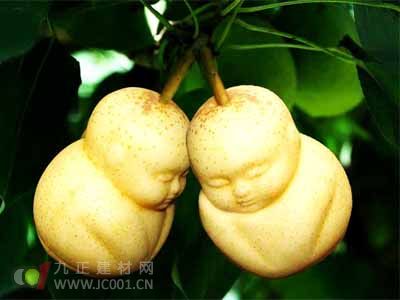Ginseng Fruit Cultivation Techniques:
Site Preparation, Fertilization and Planting: Choose a location that is well-drained, receives ample sunlight, and has loose, fertile soil with a neutral pH. Ginseng fruit is a perennial plant, so it's important to prepare the soil thoroughly. Apply 4,000–5,000 kg of well-rotted farmyard manure as base fertilizer, along with 50–70 kg of NPK compound fertilizer per acre. The planting distance should be 40–70 cm apart, with each seedling planted 20–30 cm deep and then gently pressed down. The beds should be 70 cm wide and 10 cm high, with the surface slightly above ground level.
Select healthy seedlings that are about 15 cm tall, with multiple branches, thick stems, lush leaves, and no signs of pests or disease. Plant them in a grid pattern of 50 cm × 50 cm. It’s best to plant them in the evening to reduce transplant shock. Typically, 2,000–3,000 plants can be planted per acre. After planting, water the roots thoroughly to help them establish quickly.
Fertilizer Management: In addition to the base fertilizer, apply two top-dressings during the growing season. The first application should be when the seedlings reach about 30 cm in height, and the second just before flowering. Use 3 kg of NPK fertilizer per acre, applying it around the base of the plants, keeping it at least 10 cm away from the roots. During the flowering stage, add small amounts of micronutrients like boron fertilizer or Baofengsu No. 2 to improve fruit set and quality.
After flowering, increase potassium fertilizer use to support fruit development. Water regularly, especially between March to June and September to November, when the plant requires more moisture for growth and fruiting. Maintain consistent watering to avoid stress on the plants.

Pruning: Ginseng fruit has strong regrowth potential, so timely pruning is essential. At 15–20 cm from the base, select 3–5 strong, evenly spaced branches to become the main stems. Remove all other shoots. Each side branch should have 2–3 inflorescences, with 2–3 fruits per cluster. Remove any excess flowers and small fruits to ensure the plant focuses energy on producing high-quality fruits. Each plant should not exceed 30 fruits. Since the stems are weak, use bamboo poles or plastic strings to support the plants and prevent them from falling over.
Pest and Disease Control: Common diseases include Phytophthora and Botrytis cinerea. To manage these, apply 110–150 g of chlorothalonil diluted in 400–800 times water per acre, or use a 600–800 times solution of gray mold, carbendazim, or methyl ketone Bujin. For pests such as aphids and red spider mites, alternate between 1,500 times dilution of triclosan, pyridazinone, or chlorpyrifos. Avoid using omethoate or dichlorvos, as they are highly toxic to ginseng fruit plants.
Timely Harvesting: Harvest when the fruit shows clear purple stripes or, if there are no stripes, when the fruit appears bright and smooth. If you plan to store the fruit, harvest it when it's 70–80% ripe. Store it at room temperature for 40–60 days. This allows the fruit to be available during the off-season, typically from just before the Lunar New Year until the Spring Festival, providing a valuable market opportunity.
LED MR16 Spot Light,Dimmable Led Spotlights,Indoor LED Spotlights,Indoor LED Spot Light
Foshan Extrlux Co., Ltd. , https://www.extrlux.com